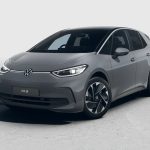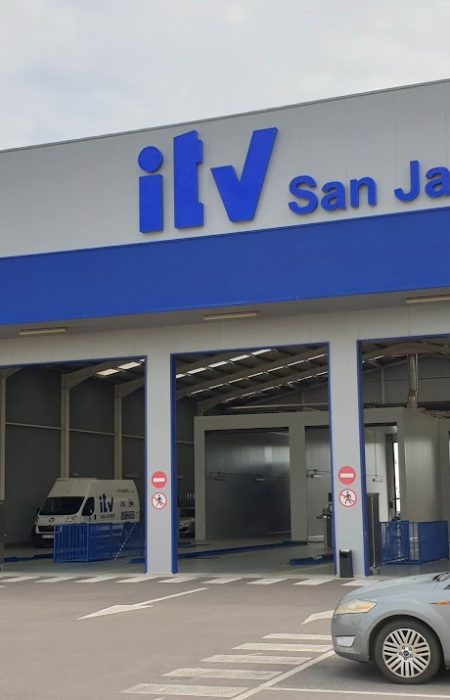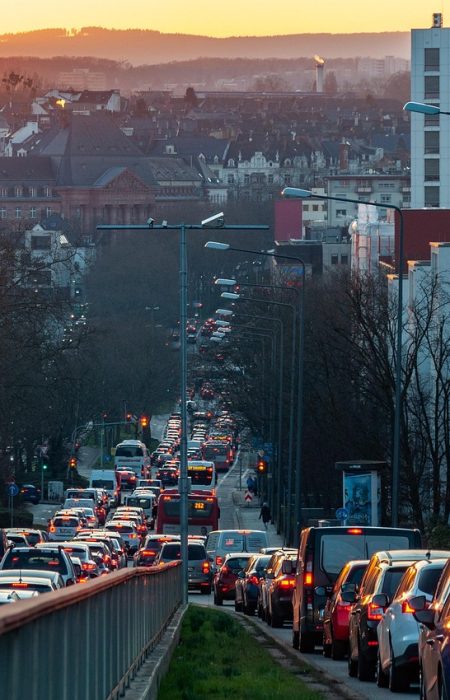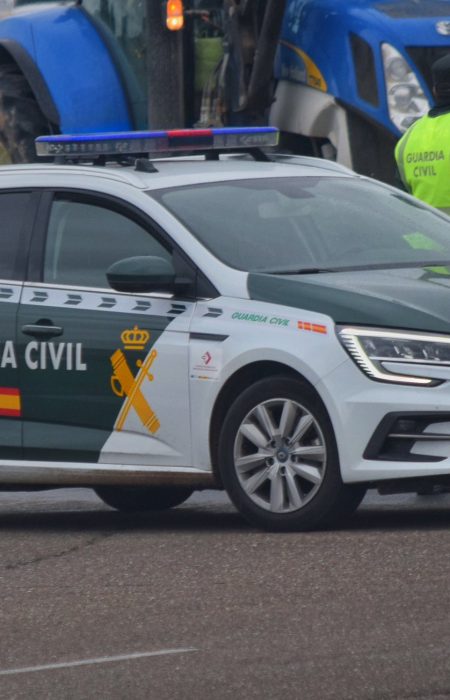Responding to the challenges raised by climate change and the conservation of resources, the automotive industry is engaged in a major transformation. Renault Group is establishing itself as a key player in low-carbon mobility, in line with its Corporate Purpose and Renaulution strategic plan. The Group is targeting carbon neutrality in Europe by 2040 and worldwide by 2050. With a target date of 2035 for this same objective, Ampere, its “pure player” entity and European specialist in intelligent electric vehicles, is spearheading the Group’s decarbonization drive.
Ampere is Renault Group’s unprecedented response to the transformation of the automotive industry. Because this challenge involves the company, its subsidiaries, its entities and their partners, it takes an ecosystemic approach. Ampere is convinced that technological innovation is the key to a sustainable future.
No single component of decarbonization can be treated in isolation. For a vehicle, this means working on its entire lifecycle (“from cradle to grave”) in five areas: eco-design, choice of resources, manufacture, use and end-of-life.
Renault Emblème demo car is the result of this approach. Revealed at the Mondial de l’Auto 2024, it reveals a little more today. A vision of a family vehicle, decarbonized “from head to toe”, it emits 90% less greenhouse gases (CO2e) over its entire life cycle than an equivalent vehicle produced today (see methodology section).
Through Emblème, Ampere and Renault are continuing the exploratory studies initiated with the Scénic Vision concept in 2022. Continuing to explore the field of possibilities, their goal is to create a working prototype of a family car – with a spacious, comfortable and high-tech design – while taking decarbonisation to new levels.
Every technical, technological and stylistic choice was dictated by efforts to take decarbonisation to the next level. Renault Emblème explores intelligent, credible and viable combinations, particularly in terms of resources, materials, production, use and end-of-life recovery.
With a 70% reduction in the carbon footprint of its components, 50% recycled materials and almost all of the materials used which can be recycled at the end of their life, Renault Emblème demonstrates the capacity of Ampere and its partners to innovate in order to maximise vehicle decarbonisation in the future.
Emblème is based on specifications implementing the principles of eco-design. Engineers and designers worked together to find the best solutions in terms of aerodynamics and efficiency. The result is stunning: an elegant shooting brake 4.80 metres long, placing equal emphasis on styling and interior space.
Renault Emblème is an invitation to travel with a cabin of contemporary, poetic design. The interior features innovative technologies including a new wide openR panorama screen spanning the length of the dashboard. The rear-mounted dual-energy electric powertrain is powered by electricity and hydrogen, an optimal combination for low-carbon driving over both short and long distances.
“Emblème embodies our ecosystem approach and the level of our ambition when it comes to building a sustainable future through technological innovation. It is proof that automotive is still driving progress… keeping emotion in the equation! It embodies the future Design Language of the Renault brand, what we call « La Nouvelle Vague ». An average ICE car has a 50 tons footprint: for Emblème, it’s 5 tons, cradle to grave. It’s a masterpiece.”
Luca de Meo, CEO Renault Group, CEO Ampere
A METHODOLOGY BASED ON THE VEHICLE LIFECYCLE ANALYSIS
Life cycle analysis (LCA) is a scientific method used to quantify a vehicle’s environmental impacts from cradle to grave. It factors in raw material extraction and component production, as well as vehicle assembly, transport, use, maintenance and recycling. It is the international, multi-criterion tool used by Renault Group. One of its main uses is to calculate the global warming potential associated with greenhouse gas emissions measured in CO2 equivalent (CO2 eq.) per vehicle. Note that Renault Group calculates the actual consumption of its vehicles over 200,000 km. Renault Group and Ampere also support the proposal made by the French automotive industry to measure the impact of the entire vehicle life cycle.
Renault Megane E-Tech electric, for example, the emits 24 tonnes of CO2 eq during its life cycle. That is practically half that of an equivalent model running on fossil fuels (50 tonnes of CO2 eq. in the case of a Captur with a petrol engine), showing that all-electric mobility is more virtuous in terms of CO2 eq. emissions. The goal for the Emblème project is just 5 tonnes of CO2 eq. from cradle to grave, i.e. a reduction of almost 90%!
CONSERVING RESOURCES AND SELECTING RAW MATERIALS
Raw materials extraction and parts manufacturing accounted for 15% of the carbon footprint of Renault Group ICE vehicles in 2020. Involving suppliers in efforts to reduce their environmental footprint is one of the Group’s strategic priorities for achieving its decarbonisation goals. Initiated by Ampere for Renault Group, Renault Emblème is the result of a collaborative project to drive the automotive ecosystem forward. It gives practical form to the most advanced perspectives for minimising the commitment of resources.
A 70% REDUCTION IN THE CARBON FOOTPRINT
In the automotive sector, six materials and components account for 90% of the carbon footprint of purchasing: steel, aluminium, polymers, electronic components, glass and tyres. The collaboration of industrial partners such as ArcelorMittal, CEA (Commissariat à l’énergie atomique), Dicastal, Forvia, Forvia / Hella, HYVIA, Michelin, OPmobility, Plug, ST Microelectronics, Valeo and Verkor, in the eco-design of Renault Emblème made it possible to optimise the choice and diversity of materials, right from the start of the project.
Every detail of the vehicle’s composition was set out in stringent specification. This made it possible to achieve a 70% reduction in the carbon footprint for all materials: steel, aluminium, plastics, tyres, glass, electronics, screens and recyclables. Renault Emblème is designed to include at least 50% of recycled materials and is over 90% recyclable. For the exterior, the materials used (steel, aluminium and plastics) are all fully recyclable at end of life.
A LOW-CARBON BATTERY
Ampere is seeking to develop low-carbon, sustainable batteries. Changes have been made across the value chain to conserve resources and reduce carbon emissions. Building on the strategic partnerships already in place, the battery of Renault Emblème explores all the areas identified.
- A sustainable nickel supply, based on a strategic partnership with Terrafame to secure low-carbon nickel sulphate and guarantee traceability throughout the supply chain. Through this agreement, Renault Group has secured a significant supply of nickel sulphate, representing an annual capacity of around 15 GWh.
- A sustainable lithium supply, based on a 5-year strategic partnership with Vulcan Energy as part of the Zero Carbon Lithium™ Project. The purpose is to secure between 6,000 and 17,000 tonnes of lithium per year for electric batteries
- Closed-loop recycling of strategic materials (cobalt, nickel, lithium) to produce new batteries. Eighty percent of recycled strategic materials will be used to make new batteries by 2030.
INNOVATION IN MATERIALS
The interiors of modern cars include a wide variety of materials, such as carpets, plastics, felt and foam. This diversity meets aesthetic and technical criteria (sound insulation, comfort, perceived quality…) but is complex to produce and recycle. The ideal solution is to use just one type of a material. Scenic Vision led the way in this respect, using only recycled and recyclable polyester for the foam, upholstery and seat seams. The colour and materials designers of Renault Emblème sought to go even further. Polyester is used not only in woven form for the seats, but has also been thermoformed as a floor covering. It is even found in the coloured scraps of the upholstery, contributing to the welcoming interior ambience.
All the colors of the 100% recycled and recyclable woven polyester that covers a large part of Renault Emblème’s interior are obtained by weaving just 4 threads of different colors (cyan, magenta, yellow and black). This process, known as “additive synthesis”, eliminates the need for dyes, emits less CO2 e and produces up to 62 shades of color.
The foam in the seat backs is biocircular, i.e. made from biological waste.
The dashboard of Renault Emblème is upholstered in linen made in Normandy (France). This natural material acts as a carbon sink (it stores CO2) and has been chosen for its aesthetic and structural qualities. Stiffened, it does not require a shell. At the same time, TFT (tailored fibre textile) technology provides a made-to-measure cut generating no waste.
CLEAR OBJECTIVES FOR THE FUTURE
The target of Renault Group is to increase the recycled content of its vehicles to 33% by weight by 2030 and to achieve a 30% reduction in the CO2 emissions associated with procurement per vehicle by 2030. Concerning the production process, the targets for recycled materials are 55% for steel, 60% for glass and 82% for flat aluminium by 2035.
A FAMILY-FRIENDLY, RELIABLE, HIGH-TECH VOITURE À VIVRE
The ambition of the Renault Emblème project was to maximise decarbonisation with a car that is family-friendly, attractive, comfortable, high-tech and versatile. More than a concept car, it is a working Ampere technology- powered demo-car unveiled and that is a pleasure to look at, to sit in and to drive. A real invitation to take to the road!
ELEGANT, FLOWING LINES
Renault Emblème features a strongly curved profile. It is an elegant combination of an estate, with a wide wheelbase of 2.90 metres, and a coupé with a moderate height of 1.52 metres and flowing roofline. The shooting brake looks are showcased by the dichroic effect of the green bodywork, making the colour look different depending on the angle from which it is viewed.
The vehicle is 4.80 metres long, making it ideal for comfortable family travel, with passengers and luggage. Emblème also symbolises Renault’s stated ambition to continue innovating in the C segment and higher, in line with its value-based strategy.
Exploring new paths in design inspired by the Renault logo, the light signature is intended to be both high-tech and easily identifiable.
A HIGH-TECH CABIN
Renault Emblème embodies a Ampere’s vision of the future where onboard technologies and innovation are required to be useful, concrete and humanised. This is particularly true of the new cockpit facing the driver and passenger at the front.
The elegantly curved openR panorama screen stretches the entire length of the dashboard. Its size of 1.2 m long and 12 cm high (display in 8K quality on a 48-inch diagonal) offers an unprecedented multimedia experience which means that both driver and passenger can benefit from both shared and dedicated information.
Operation of most functions, such as the multimedia system, is highly intuitive. Operation is via a second touchscreen located on the center console, and a single rotary knob complemented by controls on the steering wheel. The applications available on the second screen appear in the form of tiles (navigation, multimedia, Safety Coach, MyCar, etc.), which you simply slide up to display on the upper screen.
While technology is omnipresent on board Renault Emblème, the approach is very much “Shy Tech”. The interior features create a relaxed ambience, inviting the driver to take the wheel. The central screen gains a low-key matt film, while the buttons and touch-sensitive keys on the doors are housed under the textile. Each screen is energy-efficient, with automatic deactivation of the LEDs in the black display areas and local dimming.
ARTIFICIAL INTELLIGENCE FOR SAFE, EFFICIENT DRIVING
The operating systems of Renault Emblème use artificial intelligence to make life easier for the driver, while also contributing to energy efficiency and onboard safety.
- Using the driving aids supplied through the advanced human/machine interface, the driver is able to adopt a driving style that is both energy-efficient and safe, in order to further reduce energy consumption. To motivate the driver, the “eco score” and “safety score” apps give specific scores for each journey, along with encouragement and tips for improvement.
- These driving aids also enable the driver to adapt their driving reflexes in real time, depending on the situation, in order to improve their scores.
- In the same way as with sports apps, drivers can use their smartphone to analyse their journey, compare themselves with others and earn rewards.
In the same way, the Active Driver Assist system which gives access to driving delegation does so in a contextual manner. It relies on geolocation data associated with specific mapping to predictively adapt driving to the road layout, anticipating roundabouts, bends as well as changes in speed limits, for the benefit of the efficiency and therefore energy consumption.
Finally, the journey planner, continuously optimized according to the evolution of the various parameters (availability of charging points, evolution of vehicle consumption, outside temperature, etc.), suggests the route optimizing energy management in order to consume less while minimizing travel time.
DRIVING: HYPER-VERSATILITY OF USES
Renault Emblème relies on a 160 kW wound-rotor electric motor – without rare earths – powered by dual-energy: a 40 kWh NMC (Nickel Manganese Cobalt) battery housed under the floor pan, and a 30 kW PEMFC fuel cell running on low-carbon hydrogen from a 2.8 kg tank located under the front hoo.
Based on the AmpR Medium platform, the rear-wheel drive architecture hosts the various powertrain components (electric motor, battery, fuel cell and hydrogen tank) while maintaining a low centre of gravity and ideal weight distribution to promote performance and efficiency.
For day-to-day driving, the vehicle functions in the same way as a conventional electric car, with the battery charged by regenerative braking, photovoltaic cells on the roof or from a socket or charge point. It has a range of several hundred kilometres, more than enough for everyday journeys.
For longer journeys, it will rely more on the hydrogen fuel cell in order to minimise charging times.
Renault Emblème is able to cover a distance of up to 1,000 km in the same time as an equivalent ICE vehicle. No electric charging is required, just two stops of less than five minutes for hydrogen refuelling, delivering a range of 350 km. On a typical journey between Paris and Marseille, 75% of the electricity consumed by the vehicle is produced by the fuel cell, with no emissions other than water.
The multimedia system also includes a route planner to calculate the amount of power supplied by the fuel cell, in order to optimize the use of the battery or even preserve its charge.
Combining the qualities of hydrogen and electric, the dual-energy system delivers all the benefits of electric driving (instant acceleration, silent running, no vibrations). It takes the form of an attractive alternative to pure electric driving, albeit one that is entirely exploratory for the moment.
ONBOARD AMBIENCE: AN INVITATION TO TAKE THE WHEEL
The interior layout and design of Renault Emblème take passengers out of their everyday routine, inviting them on a journey that is both literal and figurative.
The colourful fabric seen on the dashboard, the top of the door panels and the top of the rear bench backrest forms a ring displaying scenes of nature and cityscapes. In a play of sharpness and blur, the car appears to be driving through these landscapes, which appear as real as the ones flashing past the windows outside.
The poetry of the interior is also expressed through wording and texts. The words “ouverture d’esprit” (open mind)can be seen on the door opening controls, and “voyage” (journey) on the straps of the map pockets, resembling rucksacks for hiking.
For the designers who created this universe, the car aspires to take us on a journey while encouraging us to set our sights on the future, a reference to Emblème’s brief as a “vision of the future”.
A GLOBAL APPROACH TO ECO-DESIGN
To achieve 5 tonnes of CO2 e from cradle to grave, Renault Emblème is the result of an ultra-efficient eco-design approach carried out by Ampère on all of its elements since the designers’ first stroke of the pen. The quest for CO2 eq savings involved all stages of the process: from the exterior lines, to the production of interior materials, through to powertrain design. Aided by modern, high-performance tools, the project designers and engineers pushed the cursor to the limit in terms of innovation.
OPTIMISED AERODYNAMICS, INSPIRED BY FORMULA 1
Efficiency at the core of Renault’s new design language
Renault Emblème symbolises a new holistic approach to vehicle design. The exterior is sporty, elegant and exciting, with sensual volumes and high-tech graphic character lines, making the car a desirable object. The design also reflects meticulous efforts to optimise vehicle aerodynamics. Along with weight, this is one of the key factors in the efficiency of an electric car. The design of the body and of each component was dictated by the need to optimise air penetration and control aerodynamic flow. This objective was achieved with no trade-off in interior space.
The drag coefficient was fine-tuned using digital twin technology and a state-of-the-art digital simulation system provided by the BWT Alpine F1 Team. As part of their productive collaboration, Renault and Ampere engineers conducted iterative testing in the digital wind tunnel, making it possible to optimise passive and active aerodynamics in record time, without actually building a mock-up. Even before it came into existence physically, the entire car was seen to achieve excellence in air penetration, saving valuable time and CO2 eq.
Technology for improved aerodynamics
To avoid breaking the flow, the rearview mirrors of Renault Emblème are replaced by two cameras, tucked into the wheel arches to minimise aerodynamic interference. The windscreen wipers are hidden under the bonnet, while the sensitive e-latch door handles are recessed into the bodywork.
Emblème was designed as an everyday car, so its active aerodynamic features are both low-key and efficient.
- The fins at the base of the front bumper open and close as required to cool the mechanical components.
- Under the rear bumper of the Formula 1-inspired flat underbody is an active diffuser, which pivots 5 degrees up and down around a horizontal axis, extending and retracting to balance the air flows over and under the vehicle to minimise drag.
- The 22-inch tall and narrow tyres have low rolling resistance.
WEIGHT AND WHY IT MATTERS
A vehicle’s weight impacts its CO2 eq. emissions at several levels: when materials are extracted, for production and transport, during use (impact on energy consumption) and when the vehicle is recycled. To minimise vehicle weight to just 1,800 kilos, the designers of Renault Emblème hunted down and eliminated every kg possible:
- The hydrogen tank is made of carbon
- The dual-energy electric powertrain – comprising a battery and fuel cell (see details below) – delivers a long range, with a battery that is almost half the weight* of the battery on an all-electric family car with a similar range
- The doors are 15 kilos lighter than the frameless models found on shooting brakes currently on the market.
* The 40 kWh battery on Emblème weighs 291 kilos compared with 513 kilos for an 87 KwH battery.
AN ALL-ELECTRIC POWERTRAIN COMBINING VERSATILITY AND LOW-CARBON OPERATION
For low-carbon mobility, the electric car is currently the best response. Huge progress has been made in recent years on the energy density of batteries for all-electric cars, but this is still not enough to compete with ICE vehicles in terms of range and journey time. While continuing its research into battery chemistry, Renault Group is therefore exploring the use of hydrogen to power electric motors.
Odourless, colourless and non-corrosive, hydrogen is a gas that produces electricity when burned in a combustion engine or oxidised in a fuel cell, a process that releases only water. Proven solutions exist for storing and producing hydrogen, while charging time at a hydrogen pump is fast: one kilogram per minute (a figure set to increase in the future).
For many years, Renault Group has been conducting research into fuel cells. Combining a fuel cell with a battery reaps the benefits of both technologies to deliver an increased range, with both sources having a balanced power delivery sufficient to keep the vehicle on the road.
HYVIA is making this technical set-up available on new Renault Master H2 Tech. This solution is suitable for LCVs.
As illustrated by Emblème, Renault Group considers that the dual-energy hydrogen-electric could be envisaged for passenger cars when, to meet the needs of road transport in the first instance, the network of hydrogen pumps is widely deployed on motorways.
SUSTAINABLE PRODUCTION AT CARBON-NEUTRAL SITES
Renault Emblème was designed as a production vehicle based on sustainable, local production, and assembled in low-carbon plants.
A POWERTRAIN BUILT IN FRANCE
The powertrain of Emblème is manufactured locally at the ElectriCity complex. The wound rotor synchronous electric motor uses no rare earths and is manufactured by the Ampere plant in Cléon (France). The recyclable battery is produced with Verkor. Last, the battery casing is made by the Ampere plant in Ruitz.
TOWARDS CARBON NEUTRALITY AT PRODUCTION SITES
Renault Group is seeking to reduce manufacturing-related CO2 emissions by 80% by 2030. Its goal is to achieve carbon neutrality by 2030 for manufacturing sites in Europe and by 2050 for all industrial facilities worldwide. To limit its CO₂ emissions, the Group is focusing primarily on green energy and energy efficiency in production. In other words, to “consume less and better”.
In France, Renault Group is optimising the size of its plants and has implemented monitoring software to oversee its use of electricity, gas and water. In 2022, Renault Group set up a dedicated energy portal – Ecogy– as part of its industrial metaverse. This portal groups data for the use of electricity, gas, compressed air, water, etc. in a single interface. Based on the data collected, the system uses AI to optimise consumption and detect leaks and anomalies in real time.
In Spain, energy supplier Iberdrola has been providing all-green electricity for the Palencia and Valladolid plants since 2021.
A STRONG LOCAL ECOSYSTEM AROUND AMPÈRE ELECTRICITY
ElectriCity is a unique and compact ecosystem, with 75% of suppliers within a 300km radius and 75% of potential customers within 1,000km. This translates into a 40% reduction in logistics costs.









No Comment! Be the first one.